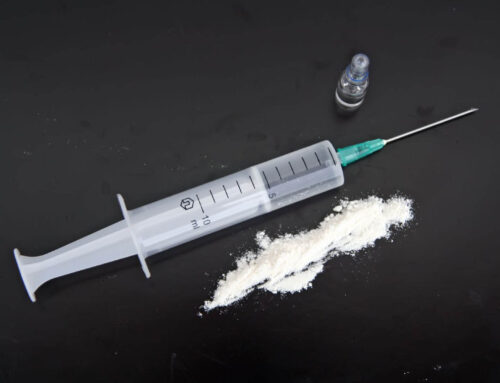
Psychiatrist Appointment: Schizophrenia and Other Psychotic Disorders
Clinical Symptom Description
Schizophrenia and psychotic disorders represent severe mental health conditions characterized by distorted perception of reality, disorganized thinking, and impaired social functioning. These disorders are typically categorized into three main symptom groups: positive, negative, and cognitive symptoms.
- Positive Symptoms involve the addition of abnormal experiences and perceptions that do not exist in reality. These include hallucinations (most commonly auditory, less often visual or tactile), delusions (false beliefs not grounded in reality), disorganized speech, and behavior. Hallucinations may include voices commenting on the patient’s actions or giving orders, creating significant stress and disorientation.
- Negative Symptoms involve the loss of previously existing functions and skills. Patients may become emotionally withdrawn, lose interest in life, avoid social interactions, and struggle with daily activities. For instance, they might neglect personal hygiene or have difficulty expressing emotions, which can appear as apathy.
- Cognitive Symptoms include memory difficulties, issues with attention, and impairments in planning and decision-making. Patients often find it challenging to complete everyday tasks like work or studies due to cognitive dysfunction.
Other psychotic disorders, such as schizophreniform disorder, schizoaffective disorder, and acute psychotic episodes, share similar symptoms but differ in duration and severity. For example, schizophreniform disorder lasts less than six months, while schizophrenia is a chronic condition.
Disease Prevalence
Schizophrenia is one of the most prevalent psychotic disorders, affecting approximately 1% of the global population according to the World Health Organization (WHO). This translates to over 24 million people worldwide living with this diagnosis. The condition typically manifests in adolescence or early adulthood, with men often experiencing symptoms between 18–25 years and women around 25–30 years.
Other psychotic disorders, such as acute psychosis or schizoaffective disorder, are less common. The prevalence of schizoaffective disorder is approximately 0.3%, while acute transient psychotic states affect up to 0.5% of the population. These statistics emphasize the importance of timely diagnosis and treatment, especially in a modern social environment with high stress levels.
Risks and Predispositions
The development of schizophrenia and other psychotic disorders involves multifactorial causes, including biological, genetic, and psychosocial factors:
- Genetic Predisposition: Studies indicate that having a close relative with schizophrenia increases the risk by 10–15 times. For monozygotic twins, the likelihood is 50%, highlighting the significant role of genetics.
- Biological Factors: Imbalances in brain neurotransmitters such as dopamine, glutamate, and serotonin play a critical role in psychotic symptom development. Research shows hyperactivity in dopaminergic pathways contributes to hallucinations and delusions.
- Perinatal Factors: Complicated pregnancies, birth-related hypoxia, and early childhood infections increase the risk of brain damage and future psychotic disorders.
- Psychosocial Causes: Chronic stress, traumatic events, social isolation, and substance abuse (e.g., cannabis or amphetamines) can trigger psychosis in predisposed individuals.
Treatment Methods
Treating schizophrenia and other psychotic disorders requires a comprehensive approach involving both pharmacological and psychotherapeutic interventions.
- Pharmacological Treatment
-
- Antipsychotic medications (neuroleptics) are the cornerstone of therapy:
- Typical Antipsychotics (e.g., haloperidol, chlorpromazine) are effective in alleviating acute psychotic symptoms but may cause side effects like tremors and muscle rigidity.
- Atypical Antipsychotics (e.g., risperidone, olanzapine, clozapine) are less toxic, reduce negative symptoms, and improve cognitive functioning.
- Long-acting injectable antipsychotics can be used in cases of treatment-resistant schizophrenia, ensuring stable blood medication levels.
- Antipsychotic medications (neuroleptics) are the cornerstone of therapy:
- Psychotherapy and Rehabilitation
-
- Cognitive-Behavioral Therapy (CBT) helps patients manage hallucinations and delusions by teaching them to identify and modify disorganized thinking patterns.
- Social Rehabilitation focuses on restoring self-care skills, occupational therapy, and social adaptation.
- Family Therapy supports the patient and their family by improving communication and reducing stress.
The Role of the Psychiatrist
The psychiatrist plays a crucial role in managing patients with psychotic disorders. Responsibilities include:
- Conducting clinical and psychopathological assessments to diagnose the condition based on patient complaints and clinical manifestations.
- Selecting personalized treatment plans combining medication and psychotherapy to achieve remission.
- Providing psychoeducation to the patient and their family about the disorder, treatment options, and relapse prevention strategies.
Long-term follow-up is essential to prevent exacerbations and enhance the patient’s quality of life.
Conclusion
Schizophrenia and other psychotic disorders are serious and chronic conditions that significantly impact the lives of patients and their families. However, modern advancements in psychiatry enable effective symptom management, improved patient functionality, and reintegration into society. A comprehensive approach involving pharmacotherapy, psychotherapy, and rehabilitation under the guidance of an experienced psychiatrist is key to successful treatment and social adaptation.
Psychiatrist Appointment: If you need to consult a psychiatrist or receive psychiatric care for schizophrenia or other psychotic disorders, choose a specialist and book an appointment. During the consultation, our psychiatrist will help address your mental health concerns and find suitable solutions.



